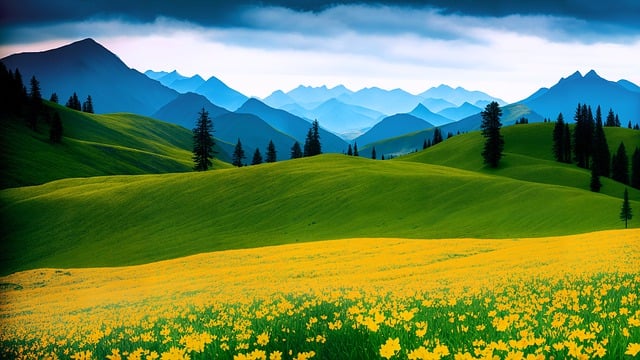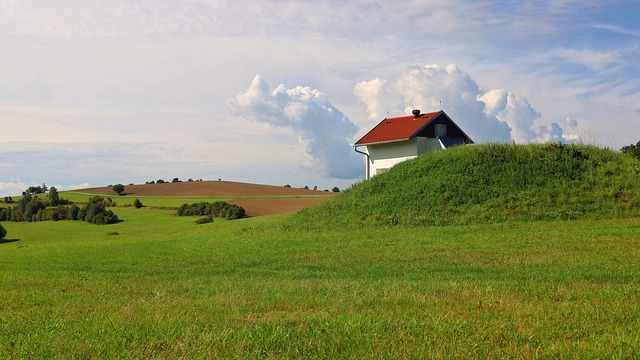Lawn care and landscaping services for homes offer a complete range of solutions from basic maintena…….
Category: Lawn Care and Landscaping
Understanding Lawn Care and Landscaping
Lawn care and landscaping encompass a broad range of activities and practices aimed at maintaining, improving, and designing outdoor spaces for both aesthetic and functional purposes. Lawn care typically involves the regular maintenance of turfgrass areas, including mowing, fertilizing, irrigation, aeration, pest control, and disease management. Landscaping, on the other hand, is a more comprehensive process that includes planting, designing, and managing outdoor spaces using a variety of plants, structures, and features to create a pleasing and functional environment.
Historically, lawn care and landscaping have evolved from the ornamental gardens of ancient civilizations to the meticulously maintained golf greens of today. The concept of a “lawn,” as we know it, gained popularity in England during the 17th century, where the aesthetic value of green spaces became a status symbol among landowners. Over time, the practice has become integral to many cultures, reflecting local tastes, climates, and environmental considerations.
Global Impact and Trends
The global impact of lawn care and landscaping is profound, influencing everything from local ecosystems to international economies. In North America and Europe, residential and commercial landscaping are multi-billion-dollar industries that employ millions of people. In contrast, in developing countries, sustainable landscaping practices are increasingly important as they address issues like food security, biodiversity conservation, and climate change adaptation.
Key trends shaping the industry include a move towards eco-friendly and sustainable practices, the integration of smart technologies, and an increasing emphasis on native plants and indigenous landscaping to support local wildlife. The rise of urban gardening and green roof initiatives also reflects a global shift towards greener cities that improve air quality and provide recreational spaces for residents.
Economic Considerations
From a economic perspective, lawn care and landscaping are significant contributors to job creation and GDP growth in many countries. The industry supports various sectors, including nurseries, equipment manufacturers, and service providers. Investment patterns show a growing interest in outdoor living spaces, with consumers willing to spend more on high-quality landscaping services and products.
In economic terms, lawn care and landscaping are not merely aesthetic choices but strategic investments that can enhance property values and business appeal. The industry’s resilience is evident even during economic downturns, as maintenance of green spaces tends to be a priority for both residential and commercial properties.
Technological Advancements
Technology has revolutionized lawn care and landscaping, with advancements ranging from GPS-guided mowers and AI-driven plant disease detection systems to drones that provide high-resolution imagery for precise irrigation and pest management. These technologies not only improve efficiency and reduce environmental impact but also offer new ways to engage with and maintain outdoor spaces.
The future potential of technology in this field is vast, with ongoing research into areas like water conservation, renewable energy integration, and biophilic design, which seeks to connect people with nature through the designed environment.
Policy and Regulation
Policies and regulations play a critical role in shaping lawn care and landscaping practices. Water conservation laws, pesticide restrictions, and green space mandates are just a few examples of how government policies can influence the industry. These regulations aim to protect public health, preserve natural resources, and encourage sustainable landscaping practices.
At an international level, agreements like the International Treaty on Plant Genetic Resources for Food and Agriculture recognize the importance of plant diversity, which is crucial for both food security and landscape biodiversity.
Challenges and Criticisms
The lawn care and landscaping industry faces several challenges, including the environmental impact of chemical use, resource depletion, and habitat destruction. Critics argue that ornamental landscapes can be unsustainable and resource-intensive. To address these issues, the industry is increasingly embracing organic practices, water-wise landscaping, and biodiversity-friendly designs.
Actionable solutions include promoting native plant species, reducing chemical inputs through biological pest control, and designing landscapes that support local ecosystems while providing aesthetic value.
Case Studies
Several case studies exemplify the successful application of lawn care and landscaping principles. For instance, the Million Pollinator Gardens Initiative in the United States has led to the creation of habitats that support pollinators, demonstrating the positive impact of landscaping on biodiversity. Similarly, water-scarce regions like California have become leaders in xeriscaping, showcasing how sustainable landscaping can be both beautiful and resilient.
Future Prospects
The future of lawn care and landscaping is poised for continued growth, with potential expansions into new markets and the development of innovative solutions to global challenges. The rise of biophilic design in urban planning, the integration of renewable energy systems within landscapes, and the use of native species to combat climate change are all areas of significant opportunity.
Emerging trends such as community gardens, green infrastructure, and the integration of technology into landscape management are set to shape the industry’s trajectory. Strategic considerations for businesses in this sector include adapting to changing consumer preferences, embracing sustainability, and leveraging technological advancements.
Conclusion
Lawn care and landscaping are multifaceted fields that intersect with environmental stewardship, economic activity, and cultural expression. As the industry evolves, it must navigate a complex landscape of technological innovation, regulatory change, and shifting consumer demands while remaining committed to sustainable practices and ecological integrity. The potential for positive impact is immense, with opportunities to enhance both the quality of life for humans and the health of our planet.
This extended outline provides a comprehensive framework for discussing the multifaceted aspects of lawn care and landscaping. Each section can be expanded into a detailed essay or report that delves deeper into specific topics within the industry, such as the environmental impact of various practices, the economic implications of policy changes, or the technological advancements driving innovation.
Lawn Care and Landscaping: Mastering Fertilization & Weed Control
Lawn care and landscaping professionals emphasize the importance of balanced fertilization and integ…….
Lawn Care: Nurturing Your Outdoor Space with Professional Landscaping Techniques
Lawn care and landscaping are key to achieving and maintaining a vibrant, healthy outdoor space. Pro…….
Elevate Lawn Beauty: Mulching, Edging for Optimal Landscaping
Lawn care and landscaping practices like mulching and edging are essential for vibrant outdoor space…….
Irrigation System Installation: Optimizing Lawn Care and Landscaping
Lawn Care and Landscaping requires understanding your lawn's unique water needs, influenced by…….
Seasonal Yard Cleanups: Boost Curb Appeal & Lawn Health
Regular seasonal yard cleanups are crucial for Lawn Care and Landscaping, offering numerous benefits…….
Transform Your Outdoor Space: Patio & Walkway Installation Guide
Selecting patio and walkway materials for lawn care and landscaping involves considering durability,…….
Boost Curb Appeal & Lawn Health with Seasonal Yard Cleanups
Seasonal yard cleanups are crucial for Lawn Care and Landscaping, aligning with nature's cycles…….
Elevate Your Space: Professional Lawn Care and Landscaping Solutions
In the digital age, professional Lawn Care and Landscaping services are crucial for property owners…….
Maximizing Your Yard’s Potential: Professional Lawn Care and Landscaping Services
Residential lawn mowing services are a Lawn Care and Landscaping game-changer for busy homeowners, o…….










